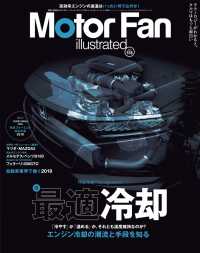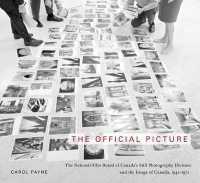Full Description
This issue recognizes the critical importance in guiding young people toward mature decision making in the arena of ethics and explores ways in which that guidance can take shape. Through surveys, observation, and interviews, chapter authors have designed activities geared to reshape the way youngsters and others think about right and wrong. Studies of teen-oriented chatroom scripts and other online communities highlight the growing trend of adolescents who seem to dwell more online than in their own neighborhoods. Traditional activities such as sports, out-of-class time, political and community engagement are also examined as sources of social and emotional development. This issue is the 108th volume in the quarterly report series New Directions for Youth Development. It is a collaboration between New Directions for Youth Development and the National AfterSchool Association. Click here to view the entire catalog of New Directions for Youth Development titles.
Contents
Editor-in-Chief's Notes (Gil G. Noam). Issue Editor's Notes (Dale Borman Fink). Executive Summary. Prologue: Mechanical Man (Astrid Liden); An eleven year old's poem about ethics and our society. 1. Shaping ethics: Youth workers matter (Joyce A. Walker, Cecilia F. Gran, Arnoldo Curiel); Drawing on their experiences in the Minnesota Youth Work Institute, the authors believe that youth workers must be taught to reflect critically on the ethical impact of their choices and decisions. 2. Moral voices of politically engaged urban youth (Ben Kirshner); Some adolescents are ready to do more than passively assimilate the moral lessons handed down by others. 3. Capitalizing on the human-animal bond to teach ethics to youth (Clinton P. Rusk, Keli M. Brubaker, Mark A. Balschweid, Edmond A. Pajor); Recent scandals involving drugged animals, fraud, and cheating at major youth livestock shows spurred the authors to devise an ethics curriculum for high school students. 4. Internet lives: Social context and moral domain in adolescent development (Karen Bradley); The author examines through empirical evidence and secondary sources the thinking and behavior of adolescents within the digital world, and considers the applicability of literature about youth ethics grounded in more traditional settings. 5. Toward ethical approaches to the inclusion of peers with disabilities (Dale Borman Fink); Should program leaders promote inclusion by downplaying developmental and other differences-or by helping peers to learn more about each other's individual differences? 6. "I like to treat others as others would treat me": The development of prosocial selves in an urban youth organization (Nancy L. Deutsch); Respect emerged as a key theme in the narratives of members of an urban youth recreation center. 7. Promoting children's ethical development through social and emotional learning (Elizabeth Devaney, Mary Utne O'Brien, Mary Tavegia, Hank Resnik); The authors propose that the lessons learned from social and emotional learning in the school setting are applicable to after-school programs, summer camps, and other settings. 8. Giving youth the social and emotional skills to succeed (Ginny Deerin); How did an angry, disruptive, noncompliant seven year old become a positively engaged adolescent? The author tells this youngster's story, her own story, and the story of WINGS, the nonprofit organization she founded. 9. Developing a game plan for good sportsmanship (Kathleen Lodl); A university extension and its partners launched a program to make good sportsmanship the norm rather than the exception in sports and other competitive arenas. 10. Pathways of influence in out-of-school time: A communityuniversity partnership to develop ethics (Donna J. Peterson, James C. Roebuck, Sherry C. Betts, Marta E. Stuart); A community survey examined adolescent thinking about right and wrong and identified the best venues for reaching youth outside school hours. Index.








